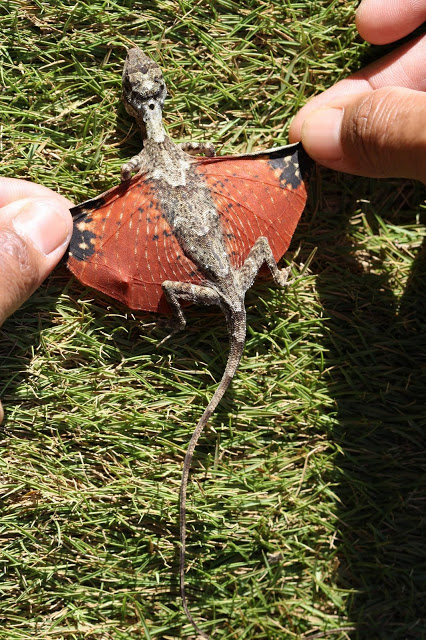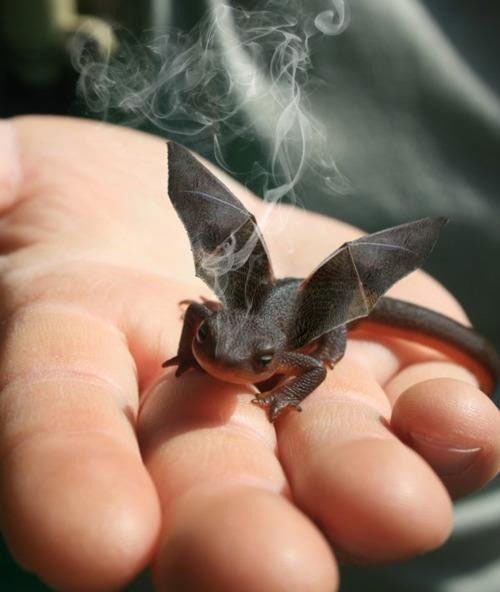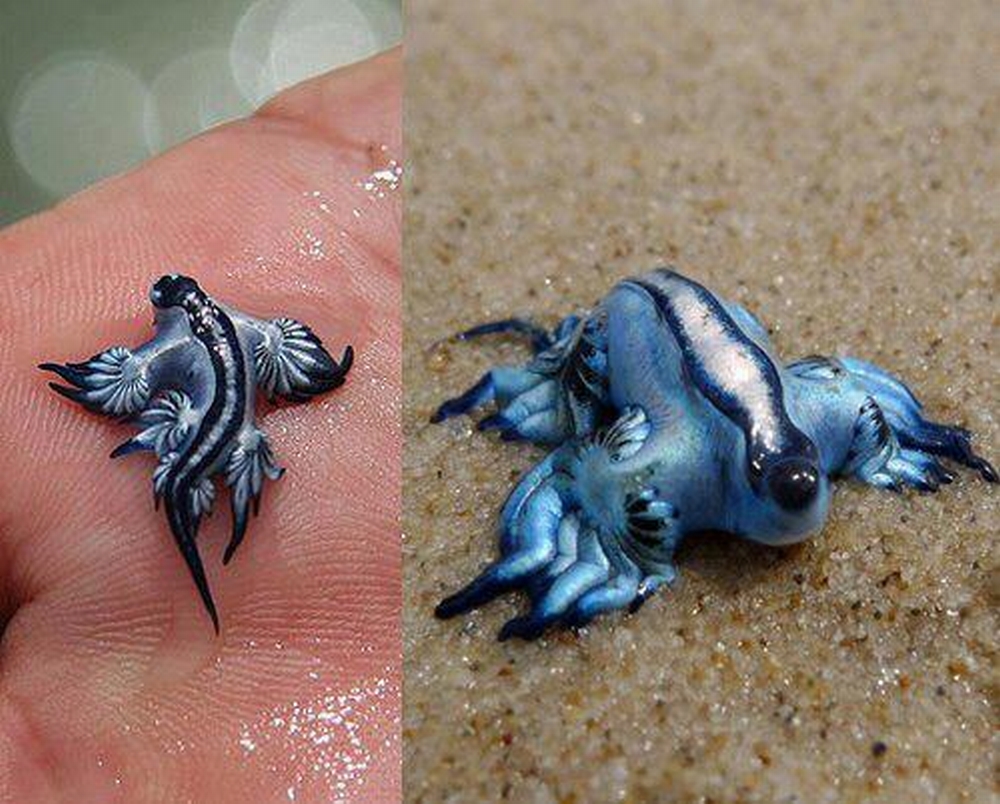|
|
|||||
Baby Dragon Photographed in Indonesia
Baby Dragon Photographed in Indonesia Dragons exist in many forms
throughout history. You’ll find reference to them in songs from days of
old, poetry, literature and tattoos, many… MANY tattoos. Dragons have
always triggered our imagination but of course most of us only relate to
dragons from fairy tales. What we have here, however, is no Photoshop
trickery and looks remarkably close to a cute Baby Dragon.
So, Are dragons real? Yes, well kind of. This bizarre animal is called the Draco Volans, also known as the Flying Dragon, and can be found in the Southwest Tropical forests of Asia and India. This “Baby Dragon”, is a member of the gliding lizards Draco. In order to move from one tree to the next, these bizarre animals can spread out folds of skin attached to its movable ribs to form “wings” and glide over 160 ft! The colorful flaps also acts as a giant billboard sign with two particular functions. First, it attracts the attention of other Draco’s who are on the lookout for love. Secondly, the wings are pretty much nature’s equivalent to a McDonalds neon-sign for predators such as snakes. However as soon as they come close — the Draco transforms itself into a living hang-glider and takes the sky — making the predator feel like a monkey trying to solve a math problem in the process.
SOURCE: Real Life Dragon Found In Indonesia - Amazing Facts SOURCE: Baby Dragon Photographed in Indonesia |
|||||
|
|||||
| The Blue Dragon Real-Life 'Dragon' Makes A Stunning Rare Appearance
By Stephen Messenger Nov. 20, 2015
Plenty of strange and fanciful
creatures have been invented within the long tradition of lore and
mythology, but few real-life beings have been so aptly named after one
of those from fiction. Meet the blue dragon — probably among the most beautiful animals on the planet. And he's a sea slug, no less.
They may be a bit more diminutive than their namesake counterparts are imagined, measuring in at just over an inch fully grown, but this species is no less fearsome. Blue dragons ( Glaucus atlanticus) spend their lives floating upside down in warm ocean currents, attacking their prey with a powerful venom from their wing-like appendages. Their sting is so deadly, in fact, that they're known to take down other venomous marine animals, like the Portuguese man-o-war.
While blue dragons are said to be quite rarely seen by humans, the beautiful, fierce little mollusk was caught on camera just last week after washing ashore on a beach in Queensland, Australia — offering a fleeting glimpse of one of Earth's prettiest inhabitants. SOURCE: Tiny Real-Life 'Dragon' Makes A Stunning Rare Appearance - The Blue Dragon - By Stephen Messenger Dancing Glaucus Atlanticus (Blue Dragon) Nudibranch - Published on Dec 31, 2012 Glaucus atlanticus (common names sea swallow, blue glaucus, blue dragon, blue sea slug and blue ocean slug) is a species of small-sized blue sea slug, a pelagic aeolid nudibranch, a marine gastropod mollusk in the family Glaucidae. This is the only species in the genus Glaucus, but is closely related to Glaucilla marginata, which sometimes is included in Glaucus.
paulhypnos
Blue Dragon - Glaucus atlanticus mDSCN4130 Blue Dragon / Sea Lizard - NSW, AUSTRALIA. We have a little cabin on a cliff by the sea. We listened to the storm all night as the waves crashed on the rocks below us. The next morning many ocean drifters had been washed onto the sand and into rock pools. I spent the morning photographing these amazing animals. The animal above can eat the stinging cells of other sea creatures and secrete them into special sac at the tip of their cerata. People who picked them up were stung severely. (See below) This was a morning I will always remember. I have not seen the creatures again. “ A day in such serene enjoyment spent, Is worth an age of splendid discontent.”This nudibranchs feeds almost exclusively on Physalia, it appears that they are able to select the most venomous of Physalia's stinging nematocysts for their own use. Like most aeolids, they store the nematocysts in special sacs (cnidosacs) at the tip of their cerata .Glaucus atlanticus is a species of medium-sized, floating, blue sea slug, a pelagic aeolid nudibranch, a marine opisthobranch gastropod mollusk in the family Glaucidae CREDITS: Paul Stewart Taken on January 12, 2003 ©All rights reserved |
|||||
| Giant Dragon Skull Found on Beach! Lyme Regis, in Dorset, UK
Poor the United Kingdom.
Just over a week after London was terrorized by a massive Mr Darcy, we have photographic proof that our ancestors were plagued by enormous dragons. Not dinosaurs, not lizards with big ideas, actual dragons. Look at these pictures! An enormous dragon skull found on the beach at Lyme Regis, in Dorset only this week, amid tons of ammonites and trilobites in what is commonly called the Jurassic Coast, because of the volume of fossils that are discovered there. This one, however, doesn’t so much take the cake as bake it, lay it on a flowery tablecloth, offer it to friends and family, and then run off before anyone can take a bite. It’s a DRAGON! I didn’t even know there were dragons in real life and now incontrovertible proof has finally arrived.
That little girl is just lucky it’s a dead dragon and all the fire-creating glands have rotted away over time. SOURCE: The 'Game of Thrones' dragon-skull in Lyme Regis, Dorset - (Press Association via AP Images) |
|||||
Related Links:
|
|||||
| FAIR USE NOTICE: This page contains copyrighted material the use of which has not been specifically authorized by the copyright owner. Pegasus Research Consortium distributes this material without profit to those who have expressed a prior interest in receiving the included information for research and educational purposes. We believe this constitutes a fair use of any such copyrighted material as provided for in 17 U.S.C § 107. If you wish to use copyrighted material from this site for purposes of your own that go beyond fair use, you must obtain permission from the copyright owner. | |||||
|
|












